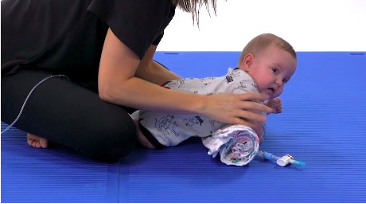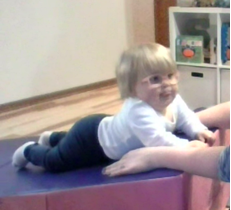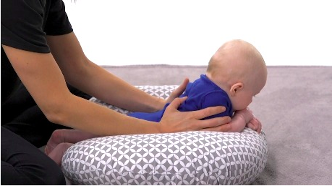3 Tips and Tricks for Tummy Time
- jordanpt

- Jan 14, 2021
- 2 min read
Updated: Mar 28, 2021
Tummy time is essential for proper development in infants. It allows for neck, back, and shoulder muscle development as well as helps prevent conditions like plagiocephaly and torticollis which are common among children under the age of 2 months. Tummy time can also help develop visual processing as being on their stomach allows children to see and explore their surrounding environment. Because of the many benefits, children should start tummy time as soon as possible after birth.

Even though there are many benefits, many parents find themselves struggling to get their children to enjoy tummy time. If this is you, you’re not alone. The reason your child may be frustrated with tummy time is their head, neck, and back muscles are still developing. When your child is placed on their stomach, they have to work against gravity to lift themselves and maintain their head in a neutral alignment. This is a lot of work and can cause your child to become frustrated and upset.
Try using these tips and tricks to help your child learn to enjoy tummy time.

1. Progressing Time
Initially, place your child on their tummy after diaper changes for approximately 1 minute. Gradually increase this time a few minutes at a time to help build their tolerance. By incorporating tummy time into daily routines like diaper changes or dressing, your child can build their tolerance faster.
2. Use Soft Surface
Use propped pillows, small wedge, folded blanket, or a boppy pillow under your child’s chest to provide additional support during tummy time. Propping your child will take away some difficulties as well as help develop neck, back, and shoulder muscles. Once positioned, slowly move small rattles or music toys from left to right at child’s eye level to engage the child and promote visual tracking.
3. Alternative Positions
Place your child tummy down on your stomach or chest while in a reclined position on a chair, bed, or floor. You will be at their eye level which will allow for bonding and soothing. You can also carefully carry your child on their belly in an “airplane” position. This will allow for the child to participate in tummy time as well as visually scan their environment.
*Images courtesy of Emily Schoemer, Medbridge, and Shutter Stock.
Blog written by Dr. Jordan Anderson, PT, DPT






















































Comentários